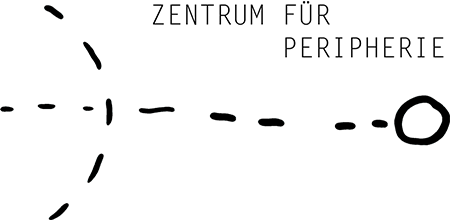Widening perspectives and developing ideas with an open outcome
Method for Transdisciplinary Creative Processes
The essential framework parameters of the form of collective creative processes consist of: A) procedural integration from the ”inside”, usually referred to as ”bottom”, and ”top” (here as synonyms for the administrative or social levels) in decisive project stages, which differs from the classical bottom-up method in that B) those directly affected by a project are directly involved in both the development and the creation process. This is because participation is not based on consultation alone, but on active participation right up to realisation. Those affected are not merely integrated into processes initiated and planned by external bodies, but rather the other way round: the experts and financial backers are sought out and brought in at the appropriate time. The methodological label in the initial phase of all sub-projects is bottom → top (bottom-up); only in a later step does bottom + top (bottom and top) apply. The beginning of the brainstorming process is crucial. In every project, a sensible balance must be found in the cooperation between “bottom” and “top”.
An elementary feature of the method is the detection and admission of the different perspectives, longings and wishes of those involved, which are always the starting point for individual sub-projects. In each project phase, they make the first move. In other words, a space is established, in which ideas and drafts in all their idealism or inadequacy are created, considered, taken seriously and collected without prejudice and without constraint. Only then are experts consulted. In mutual exchange, a collective synthesis of the best thoughts is achieved and progressively the realisation is striven for. During this process, it becomes apparent that it is precisely in hierarchy-free cooperation that produces results of high value. The results that can be achieved exceed classical solutions in their complexity and quality. This has been impressively demonstrated by previous projects of this kind.
The joint project may become the “idea givers” own, because it contains their own ideas and their own work and because emotional and formal aspects of the result are connected.
A positive side effect of this method is the incidental, almost unnoticed “learning”, because in the project a wide variety of procedures, or actions of a craftsman-like nature (collecting and elaborating ideas, perceiving qualities, making decisions, cooking, photographing, building, sawing, moulding, making models) are carried out seriously and with dedication in cooperation with people from different backgrounds who would not have met outside the project space. The experiences acquired through direct application are extremely sustainable and usually more self-evident and easier to learn than institutionally imparted knowledge. Social skills such as communication, organisation, planning and teamwork are also learned and practised on the fly in the process.
The method developed by the artist Ute Reeh is a choreography for changing perspectives, developing ideas and implementing them in defined steps.
Setting
The process begins in the place or space that the project is concerned with.
At least the facilitator and the person affected, or a group of people affected, interested or just curious. They act as idea finders.
Tools
Plasticine or other amorphous material that allows for spontaneous expression
Pencil and paper
Architectural plan of the situation/space
Choreography
The process proceeds in defined steps:
- Perception of the place based on the questions, where do I feel comfortable here? What should stay the same? What should be left out? What is missing?
- By closing the eyes, one’s own imagination is activated.
- The imagined/imagined is depicted – without words – with the help of a piece of plasticine.
- The models created in this way are looked at closely by the creator, explained and positioned on the plan.
- The plan fills up with ideas.
- Each model is then supplemented and enriched by precise observations of all the other participants.
Further ideas, functions and details are added. - A dialogue takes place to make the idea more precise and to formulate it. The object-like nature of the small, three-dimensional models makes it possible to involve people from completely different backgrounds.
- The objects are very simply drawn and labelled in different views.
- Professionals are called in. The positioning of the models on the plan serves as a bridge for exchange.
The degree of abstraction of plans and technical drawings is often an obstacle for non-professionals to understand and comunicate a design. The models as three-dimensional and conceptually described objects form the basis of a goal-oriented dialogue that leads to practical and usable results. This is the first step towards realisations. Each participant contributes decisively to the planning with his or her own ideas and impulses.
© Ute Reeh
